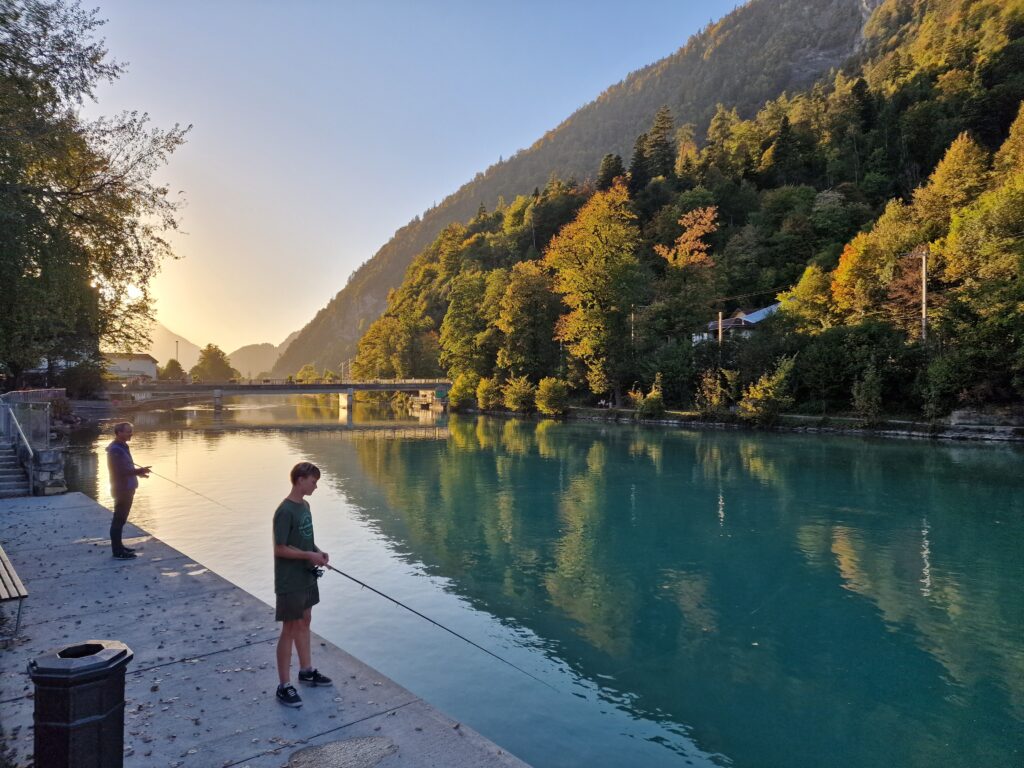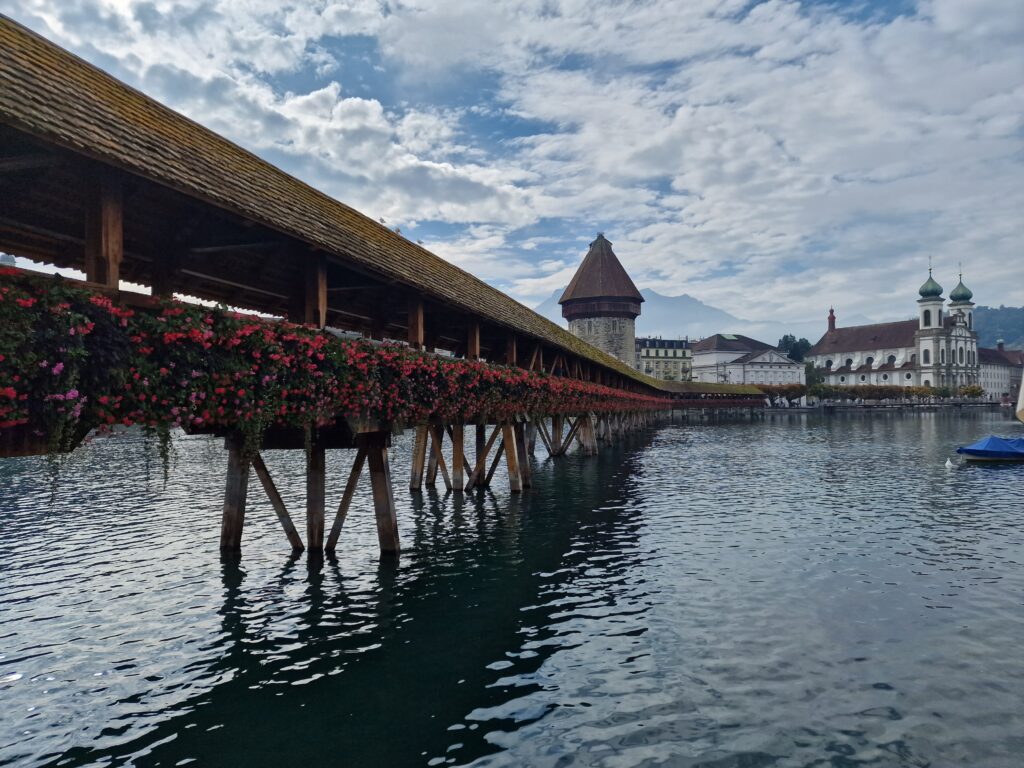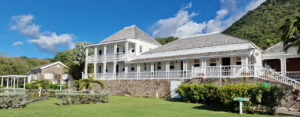
Eiger Counter
Having dipped our frigid toes into the fondue of Swiss life in our first week proceeding across the undulating north, we were now fully equipped to take on the challenges and enormous heights of Switzerland’s Alpine south. Encompassing some of the tallest mountains in Europe, we had our sights set on getting as close to the top of as many major peaks as was humanly possible without the need for crampons or, more importantly, any exertion of any kind. Luckily, the Swiss cater to exactly this kind of slothful clientele, provided you can get yourself to the lakeside town of Interlaken, right in the very heart of the nation.
Sandwiched between a pair of glacial lagoons, Brienzersee and Thunersee, the town is primarily used as a hub for extreme sport enthusiasts as the surrounding area is a playground for the young and reckless. It’s also where one begins their train journey from the valley floor all the way up to Jungfraujoch, an observatory and weather station precariously perched on the edge of a mountainside. So iconic a location it is, it has been used as a setting in various TV shows and big-budget blockbusters including James Bond (On Her Majesty’s Secret Service) and Clint Eastwood’s The Eiger Sanction. Despite its extreme remoteness, the station has been accessible since 1912 via a railway line of engineering genius, one which we were about to experience for ourselves.
With beers in backpacks, we began the first leg of our journey in earnest as our comfortable train tracked a narrow vale along a gushing stream up to the ski resort of Grindelwald. From there, a cable car is required to bypass the illustrious Eiger, whose colossal north face has been frustrating, and killing, climbers for over a hundred years. From within touching distance of the portentous rockface, we began our final ascent which involved a bumpy rack railway line right through the mountain itself until, eventually, we reached a cave-cum-station located about one hundred metres directly below Jungfraujoch. One short elevator journey later and we were greeted by one of the most astonishing views I’ve seen since the Kettering Christmas lights of 2014. Surrounded by four thousand metre massifs and overlooking the imposing twenty-kilometre Aletsch Glacier, it was a moment to take a breath, which was increasingly difficult given the altitude, and attempt to process our remarkable surroundings.
Although busy, it remained just about possible to find a serene spot on the vantage platform from which to gaze in peace until our digits started to freeze and the warmth of the Indian restaurant inside was required. Once sufficiently thawed, we abandoned the bhajis and took the rather intimidating underground tunnel through the mountainside and out onto the seemingly endless glacier. With signage warning us that we would inevitably plunge into a crevasse at any moment, we decided to pull back to a snowy ridge, pop out our meal deals and Quöllfrisch lager, and enjoy a luncheon location only trumped by the Briton Ferry Workingmen’s Club. After a brief stop at the ice palace and on-site chocolate shop, we headed back down to civilization and the relative warmth and comfort of Buddy’s Irish Pub, Interlaken, where we attempted to chew the cud of the day over a few more Quöllfrisches.
Not satisfied with just one bloodcurdling mountain pass we decided to delve even further south along roads that made the Pamir Highway look like Mumbles Road. Eventually, even these roads ran out and we were forced to take another spectacular train journey through the high Alps. The purpose of this particular excursion was to reach the mountain resort of Zermatt, as this would afford the closest and clearest views of another legendary peak: the Matterhorn. Its pyramid-shaped pinnacle glistened under the sun while its great bulky body cast a menacing shadow on the village we were now strolling through. We climbed until the streets turned to narrow paths, took one last glance at the beast, and retreated to the comfort of a pub in Zermatt.
Escaping the Swiss Alps required our second car train of the trip as well as strong nerves given some of the hairpin-laden roads Vishnu was required to navigate. Our final destination would be Lucerne; a location known for its lake, medieval architecture, and something that combines the two: Kapellbrücke. This is a wooden covered bridge that adorns most postcards of the city and is by far its biggest attraction. The bridge, rather uniquely, houses a number of interior paintings that need replacing every few years when the highly flammable structure inevitably catches fire again. Fortunately for us, we had arrived on a fireless day and could cross it in peace. With our treasured two weeks in Switzerland at an end, we began the short journey from Lucerne to her eastern reaches in order to visit our next rather unusual and oft-forgotten nation…
J
















